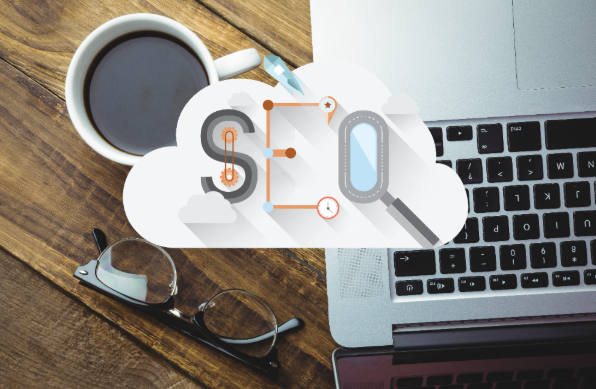User Onboarding 101: How to Turn New Users into Loyal Customers

First impressions can make or break a relationship, especially in the digital world. When someone downloads your app or signs up for your platform, the first few minutes of interaction are crucial. That’s where user onboarding steps in. Done right, onboarding isn’t just about showing users how things work—it’s about making them feel welcome, valued, and confident from the start.
In this guide, we’ll explain the fundamentals of effective user onboarding, explain why it matters more than ever, and share actionable steps to turn curious newcomers into lifelong customers.
What Is User Onboarding?
User onboarding is the process of introducing new users to your product and helping them reach their first “aha!” moment as quickly and smoothly as possible. It’s more than just a tutorial—it’s the bridge between sign-up and long-term engagement.
An effective user onboarding experience educates, excites, and empowers users while reducing friction. Whether it’s a SaaS product, mobile app, or eCommerce platform, onboarding lays the groundwork for user success.
Why Effective User Onboarding Matters
Let’s get real—users are impatient. If they can’t figure out your product fast, they’ll leave. That’s why it’s critical to create an onboarding flow that grabs attention, delivers value quickly, and builds trust.
Here’s what effective user onboarding accomplishes:
- Reduces drop-off and churn rates
- Increases product adoption
- Boosts user confidence and satisfaction
- Shortens the time to value (TTV)
- Encourages repeat usage and brand loyalty
In short, it sets the stage for long-term retention.
Key Components of Effective User Onboarding
Let’s break down what makes onboarding truly effective:
1. Welcome and Reassure
Start by making users feel comfortable. A warm welcome message and a brief explanation of what they can expect help ease anxiety and boost engagement from the first click.
2. Show, Don’t Just Tell
Use tooltips, walkthroughs, or demo videos to guide users through key actions. Instead of lengthy manuals, let them interact with features in a hands-on way.
3. Highlight the Core Value
Don’t overwhelm users with every feature. Focus on the core benefit of your product and help them experience that value as quickly as possible. The faster they win, the more likely they’ll stick around.
4. Progressive Disclosure
Introduce features gradually as users become more familiar with your product. This avoids information overload and helps users grow their confidence over time.
5. Personalization
Tailor the onboarding experience based on user goals, behavior, or persona. Personalized onboarding makes users feel seen and increases relevance and engagement.
6. Incentivize Early Actions
Reward users for completing tasks during onboarding, like profile setup or inviting friends. This can create momentum and form usage habits early.
7. Offer Help and Support
Provide accessible help options such as live chat, FAQs, or a guided help center. Let users know that support is always within reach if they get stuck.
Popular Formats of User Onboarding
- Product Tours
A guided walkthrough that introduces key features, often triggered at first login.
- Checklists
A list of onboarding tasks (e.g., upload profile picture, connect email) that users can complete step-by-step.
- Tooltips and In-App Prompts
Small, contextual pop-ups that appear as users explore the interface.
- Email Drip Campaigns
Onboarding emails that deliver helpful tips and encouragement over a few days or weeks.
- Interactive Tutorials
Hands-on exercises that let users try out features in a sandbox or live environment.
Each of these formats supports effective user onboarding by helping users learn by doing, not just reading.
Mistakes to Avoid in User Onboarding
- Overwhelming the User: Too many features, too fast, causes confusion.
- Assuming Too Much Knowledge: Don’t expect users to know how your interface works. Guide them.
- Ignoring Feedback: Failing to iterate on your onboarding process based on user data leads to blind spots.
- No Follow-Up: Onboarding doesn’t end after the first session. Keep nurturing users in the days ahead.
Measuring Onboarding Success
To gauge whether your effective user onboarding strategy is working, track these key metrics:
- Time to First Value (TTFV): How long does it take a user to achieve their first success with your product?
- Activation Rate: What percentage of users complete the key onboarding actions?
- Churn Rate: Are users sticking around after the onboarding phase?
- Support Tickets: Are users confused or frequently asking for help during onboarding?
- Feature Adoption: How many users are engaging with core features after onboarding?
Use this data to refine and optimize your onboarding experience continuously.
Final Thoughts
Effective user onboarding isn’t a one-time task—it’s a continuous journey of learning and refinement. Done right, it turns new users into confident, engaged, and loyal customers. Whether you’re just starting or looking to improve an existing flow, focusing on clarity, personalization, and early value delivery is key.
So, if you want to boost product retention and user satisfaction? Start by building a practical user onboarding experience that delights from day one.
With Nudge, you can streamline your onboarding process by delivering personalized experiences from the start. Our platform helps you engage new users effectively, ensuring they understand and connect with your product quickly.
Book a demo today to see how our AI-powered nudges and engagement tools can help you optimize user onboarding and transform new users into loyal, engaged customers.

6 Tips To Unlock New Business Opportunities With My Aged Care Registration

The Hidden Business Power of Storytelling Through Books

Diamond Painting Apps & Digital Tools for 2025 Artists

Accelerating drug discovery through the DEL-ML-CS approach

AI in Marketing Is No Longer a Buzzword — It’s the Strategy

Why Software Test Automation Is the Future of Quality Assurance
Fix GB WhatsApp Ban 2025 – Safe Usage Tips & Best Practices

Why a Shockproof Cover Is Your Best Defense Against Cracks








